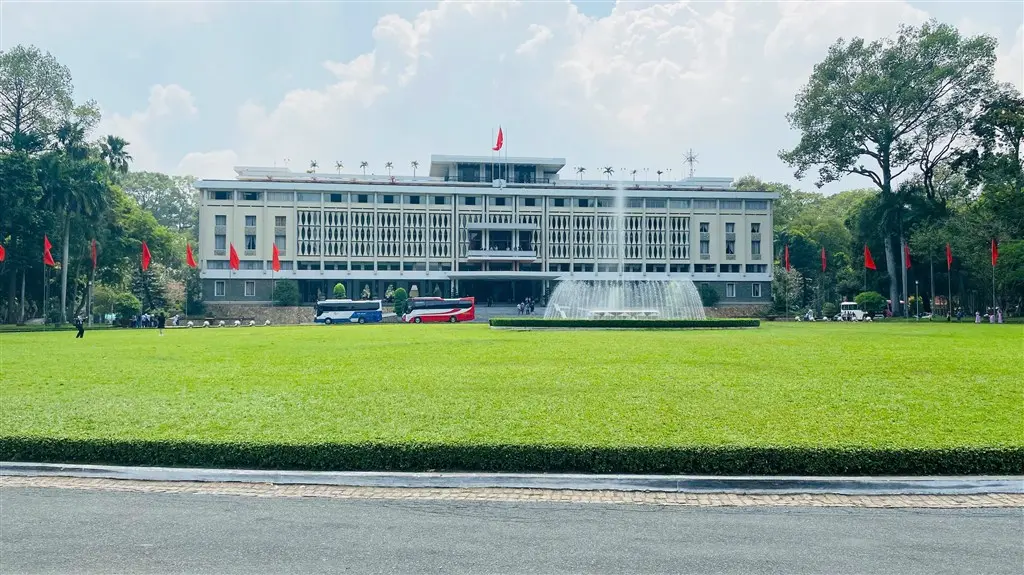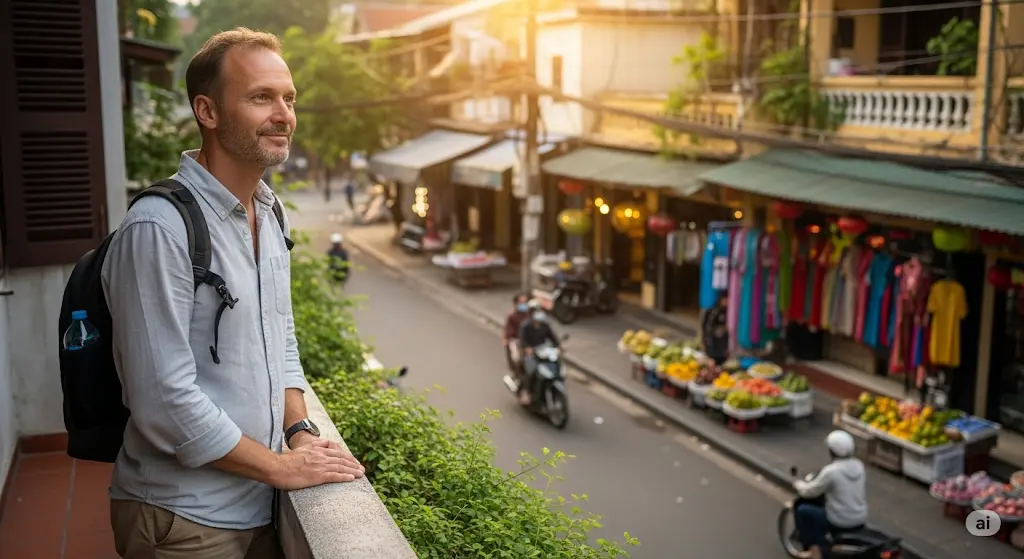Vietnam, a country of breathtaking landscapes and vibrant culture, experiences distinct weather patterns. One of these is the Vietnam wet season. Many travelers wonder when is the best time to visit Vietnam, and the thought of rain might seem daunting. However, understanding this period, often called the monsoon season, can unlock unique travel experiences.
This guide from EssentialVietNamtravel.com aims to provide clear, practical information about the seasons in Vietnam, particularly the rainy period. We will cover when it occurs, what to expect, and how to make the most of your trip, even if it includes some rainfall. Knowing what is the weather like in vietnam throughout the year helps in planning.
The Vietnam wet season is not a monolithic event. It varies significantly across the country’s diverse geography. From the mountains of the north to the Mekong Delta in the south, the timing and intensity of the rain differ. This guide will break down these regional variations, helping you determine the Vietnam best month to visit for specific areas or activities. We will explore the Vietnam climate, a part of the broader Southeast Asian climate, and explain how the annual weather cycle shapes the landscape and daily life. Whether you’re considering the summer season in vietnam or other times, this information will be invaluable.
When is the Vietnam Wet Season? Understanding the Monsoon Arrival
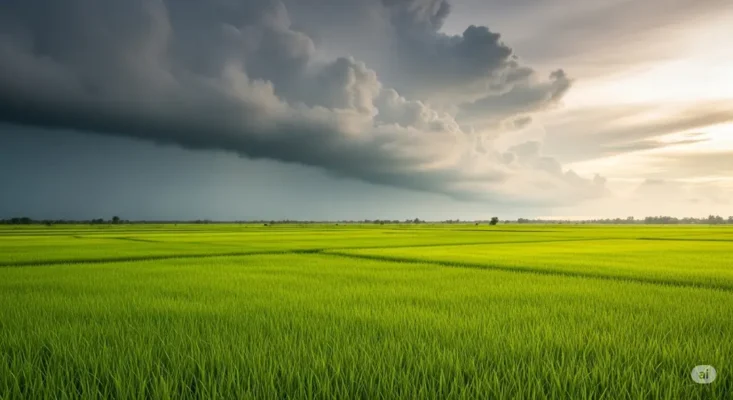
The primary question for many planning a trip is: when is the Vietnam wet season? Generally, the Vietnam wet season is primarily caused by the Southwest monsoon. This monsoon influences much of Southeast Asia. The season’s duration is approximately 5-6 months across the country, but the exact timing varies significantly between North Vietnam, Central Vietnam, and South Vietnam. This North-South timing difference is crucial for travel planning. Understanding this annual weather cycle helps you anticipate conditions. The monsoon season is a predictable cycle, though year-to-year variations can occur.
In broader terms, the Vietnam wet season typically spans from May to October for a large part of the country. However, this is a generalization. For instance, the timing for North Vietnam wet season is generally from May to October. Conversely, the South Vietnam wet season also occurs from May, but it can last until November. Central Vietnam has a different pattern, with its wet season timing often from September to December, sometimes extending into January.
Knowing when is wet season in vietnam for specific regions is key. This period is a core part of the tropical weather patterns affecting Vietnam. Many ask, does vietnam has 4 seasons? While the north experiences more distinct temperature shifts, the south is more characterized by its wet and dry seasons. The arrival of rain marks a significant shift from the Vietnam dry season or arid period.
The start of the wet season often brings a welcome change from the preceding heat. The monsoon causes rainfall, which is essential for agriculture, particularly rice cultivation. While the term “wet season” might conjure images of constant downpours, this is not always the case. Often, the rain comes in short, heavy bursts, usually in the afternoon or evening, leaving other parts of the day clear and sunny. This predictable cycle means that, with some planning, the wet season can still be an excellent time for Vietnam travel. The alternative name for this period is simply the monsoon season, a term widely understood across Southeast Asia.
What to Expect During Vietnam’s Rainy Period: Daily Life, Humidity, and Precipitation
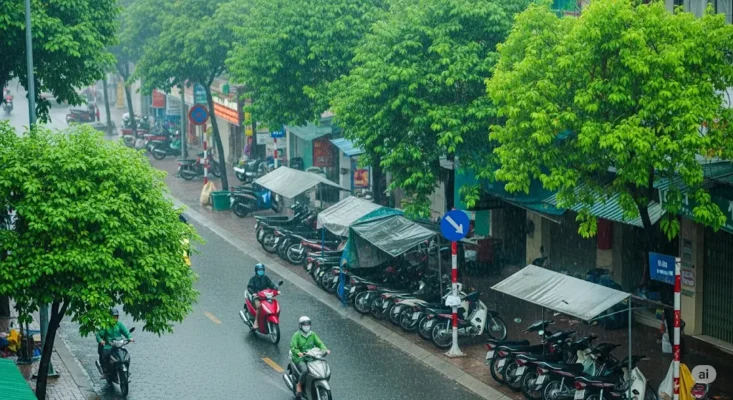
Understanding what the Vietnam wet season entails beyond just dates is important. A key characteristic of the Vietnam wet season is high humidity. This increased humidity is often more noticeable than the rain itself. Temperatures during this period generally remain warm to hot, and when combined with the moisture in the air, it can feel quite steamy. Daily life adapts to these conditions. Locals are well-accustomed to the rainy period, and life continues with a few adjustments. You will see many people donning a raincoat or carrying an umbrella.
Precipitation patterns vary. While some days might see prolonged rain, especially during peak rain months, many days feature heavy downpours that last for an hour or two. These bursts of rain can be intense, leading to temporary flooded streets in some urban areas. However, drainage systems in major cities like Hanoi and Ho Chi Minh City often clear the water relatively quickly.
In rural areas, the rain transforms the landscape, bringing forth lush vegetation. The scenery becomes incredibly green and vibrant, a phenomenon some refer to as “green season tourism.” This high rainfall is a defining feature of the climatic aspect of the season.
You should expect cloud cover to be more prevalent during the wet season, though sunny intervals are common. The rain affects daily life by influencing commute times or outdoor market hours, but it rarely brings everything to a standstill. The common weather pattern involves these afternoon showers, meaning mornings are often bright and suitable for activities. The weather patterns driven by the monsoon are a fundamental part of the tropical climate experience in Vietnam. Knowing what is weather like in vietnam during this time helps manage expectations and pack appropriately.
Navigating Travel in Vietnam During the Wet Season: Impacts and Opportunities, from Hanoi to the Mekong Delta
Travel Tip: Find Great Deals on Wet Season Flights
One of the biggest perks of traveling during the wet season is lower flight prices. Use these tools to compare fares and find the best deals for your trip to Vietnam.
Traveling during the Vietnam wet season presents both challenges and unique opportunities. Wet season impacts travel, and it’s wise to be prepared. Potential disruptions can occur. Heavy rain might occasionally lead to flight delays, and road travel in certain areas, particularly mountainous regions, could be affected by an increased landslide risk. Flooding can be an associated risk, especially in low-lying areas like parts of the Mekong Delta or specific urban districts. Ho Chi Minh City and Hanoi can experience temporary inundation after a significant downpour.
However, there are considerable advantages. One significant benefit is fewer tourists. This lower tourist density means popular attractions are less crowded, allowing for a more relaxed experience. Accommodation and tour prices may also be lower, offering better value. The landscape during the wet season is stunning.
The rainfall nourishes the environment, resulting in lush green landscapes that are particularly photogenic. This is especially true for agricultural regions where rice cultivation thrives. For example, the Mekong Delta flooding, while a challenge, also sustains the region’s unique ecosystem and way of life, with floating markets active and vibrant.
Travel considerations should include flexibility in your itinerary. Allow for potential delays and have backup plans for indoor activities. Transportation options remain largely operational, but it’s good to check schedules, especially for ferries or boats to islands. The experience of traveling from the bustling streets of Hanoi in the north, through the historic sites of Da Nang and Central Vietnam, to the vibrant Mekong Delta in the south during the wet season can be incredibly rewarding, offering a different perspective on the country.
This period, sometimes called the “green season tourism” window, appeals to those seeking natural beauty and fewer crowds. Understanding the economic impact, such as on tourism and agriculture, also provides context.
Packing for Vietnam’s Wet Season: Essential Gear for Rain and Humid Monsoon Weather
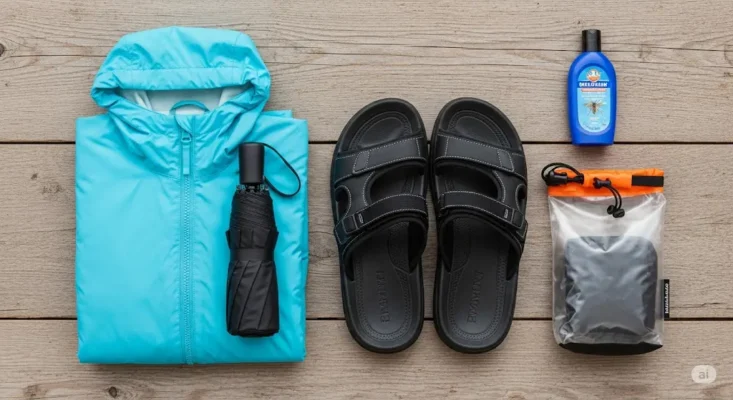
Knowing what to pack for Vietnam wet season is crucial for a comfortable trip. The combination of rain and high humidity dictates a specific approach to clothing and gear. The aim is to stay dry when needed but also to remain cool in the humid conditions.
Your clothing recommendation for the Vietnam wet season should focus on lightweight, breathable fabrics. Cotton can absorb moisture and take a long time to dry, so synthetic blends or quick-drying materials are often better. Pack loose-fitting clothes. A light rain jacket is essential – choose one that is waterproof but also breathable. An umbrella is also a very useful item for shorter showers or navigating crowded streets.
Footwear recommendation includes waterproof sandals or flip-flops. These are ideal for navigating wet streets and dry quickly. If you prefer closed shoes, ensure they are water-resistant or bring a pair that you don’t mind getting wet and can dry quickly. Avoid heavy leather boots. For a country where the weather can change quickly, having the right footwear is a major comfort factor.
Other important items include:
- A waterproof bag or cover for your backpack or daypack to protect electronics and important documents.
- Zip-lock bags for smaller electronics like phones.
- Insect repellent, particularly for evenings and rural areas, as mosquito populations can increase with the rain.
- A quick-dry travel towel.
- Consider bringing a few extra changes of clothes, as laundry might take longer to dry.
Packing smart for the monsoon weather ensures that rain doesn’t dampen your spirits or your exploration of Vietnam. Thinking about what to pack for vietnam wet season seriously will enhance your travel experience significantly.
Staying Safe and Healthy in Vietnam’s Wet Season: Tips for Heavy Rain and Typhoon Awareness
While the Vietnam wet season offers unique beauty, it’s important to be aware of potential safety and health considerations. Being prepared can help you navigate any challenges smoothly. EssentialVietNamtravel.com emphasizes taking practical steps to ensure your wellbeing.
One of the common dangers of Vietnam wet season is dealing with flooded streets after heavy rain. If you encounter flooded areas, try to avoid wading through the water if possible, as it may conceal debris or open drains. If you must, walk slowly and carefully. Be mindful of electrical wires that might be affected by flooding.
Road safety can also be compromised during downpours, with reduced visibility and slippery surfaces. If riding a motorbike, exercise extreme caution or consider alternative transport during heavy rain. Landslide risk is a concern in mountainous areas, so check local conditions before traveling to such regions.
Health risks can also increase during periods of high rainfall and humidity. Mosquito populations tend to rise, increasing the risk of mosquito-borne illnesses like dengue fever. Use insect repellent consistently, especially during dawn and dusk. Wear long sleeves and pants in high-risk areas if possible. Ensure your accommodation has mosquito nets or screens if you are in rural zones. Drink bottled or properly treated water to avoid waterborne illnesses.
Typhoon awareness is particularly important if you are traveling in coastal regions, especially Central Vietnam, during its wet season (September to December), which coincides with part of the typhoon season in the South China Sea (East Sea). Typhoons can bring very strong winds, torrential rain, and storm surges.
- Monitor local weather forecasts regularly.
- Heed any warnings or advice from local authorities or your accommodation.
- Be prepared to alter your travel plans if a typhoon is forecast. Your safety during Vietnam wet season is paramount. While serious incidents are not frequent for tourists, being informed and cautious allows for a more secure and enjoyable trip. Understanding these environmental effects and health risks contributes to a well-prepared journey.
Regional Guide to the Wet Season: North Vietnam, Central Vietnam, and South Vietnam Timings
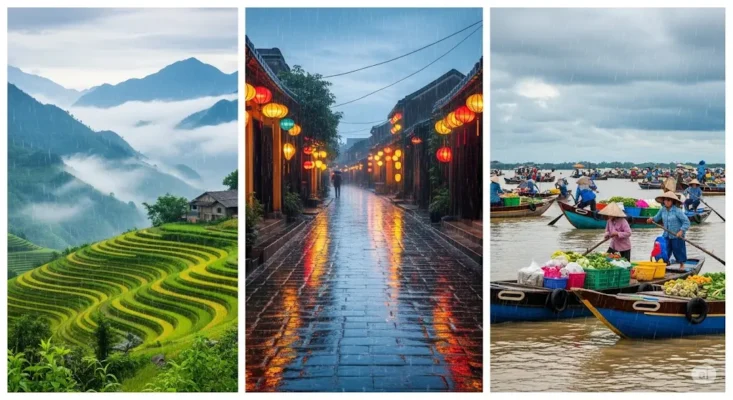
Vietnam’s elongated shape means its climate and the timing of the Vietnam wet season vary significantly from north to south. Understanding this regional variation is key when deciding when is the best time to travel to Vietnam or the Vietnam best month to visit specific areas. The influence of the East Sea and regional topography influences intensity and timing.
Wet Season in Northern Vietnam (e.g., Hanoi)
The North Vietnam wet season generally has its timing from May to October. During these months, you can expect warm to hot temperatures and increased humidity. The peak rain months for the Northern region wet season are often July to August. In Hanoi, this translates to frequent, often heavy, afternoon showers. Mountainous areas in the north, like Sapa, can experience cooler temperatures and persistent drizzle or fog during this time.
Travel to Ha Long Bay, part of the Gulf of Tonkin, can sometimes be affected by storms, so it’s wise to check forecasts. Despite the rain, the landscapes, especially rice terraces, are incredibly verdant. This period also coincides with summer in Vietnam for this region. The question “does vietnam get cold?” is relevant here, as winters in the far north can be quite chilly, contrasting with the wet season’s warmth. Knowing the seasons vietnam offers in the north is essential.
Wet Season in Central Vietnam (e.g., Da Nang)
Central Vietnam, which includes popular destinations like Hue, Hoi An, and Da Nang, has a slightly different pattern. The Central Vietnam wet season timing is typically from September to December, though it can sometimes extend into January or even February. The Central coast wet season sees its peak rain months in October to November.
This period can also coincide with the typhoon season, meaning there’s a higher typhoon risk. Storms originating from the South China Sea can bring prolonged heavy rain and strong winds. It’s crucial to monitor weather updates if traveling to the Vietnam wet season Central coast during these months. However, the early part of this period (e.g., September) might still offer pleasant days. The unique characteristic here is the strong influence of the East Sea on weather patterns. What is the weather like in vietnam’s central coast? It’s typically stormy during these peak months.
Wet Season in Southern Vietnam (e.g., Ho Chi Minh City, Mekong Delta)
The South Vietnam wet season typically runs from May to November. The Southern region wet season has its peak rain months generally from June to August. In Ho Chi Minh City, rain usually comes in short, intense bursts in the afternoon, often clearing up quickly. Temperatures remain consistently warm to hot. The hottest month in vietnam, particularly in the south, often precedes the wet season, around April or early May.
The Mekong Delta wet season is a defining characteristic of the region. While it leads to Mekong Delta flooding, this is a natural part of the agricultural cycle, making the floating markets particularly active and the landscape incredibly lush. Travel here is still very feasible and offers a unique glimpse into local life adapted to the annual weather cycle. The Vietnam summer months largely overlap with this wet season in the south. Understanding when is vietnam dry season (roughly December to April for the south) provides a contrast.
Knowing these regional specifics helps you plan a trip that aligns with the best season to go to vietnam for your interests. Whether it’s exploring ancient towns, cruising majestic bays, or experiencing the vibrant delta, understanding the Vietnam wet season is your first step to an unforgettable adventure. We at EssentialVietNamtravel.com hope this detailed guide helps you prepare for and enjoy your journey, rain or shine.
Remember, the “best season to travel in vietnam” can depend entirely on your preferences and desired destinations, and the wet season has its own unique charm and advantages. Vietnam weather best time to travel is a nuanced decision, and the wet season shouldn’t be automatically discounted. With proper planning, your Vietnam travel can be fantastic any time of year.

